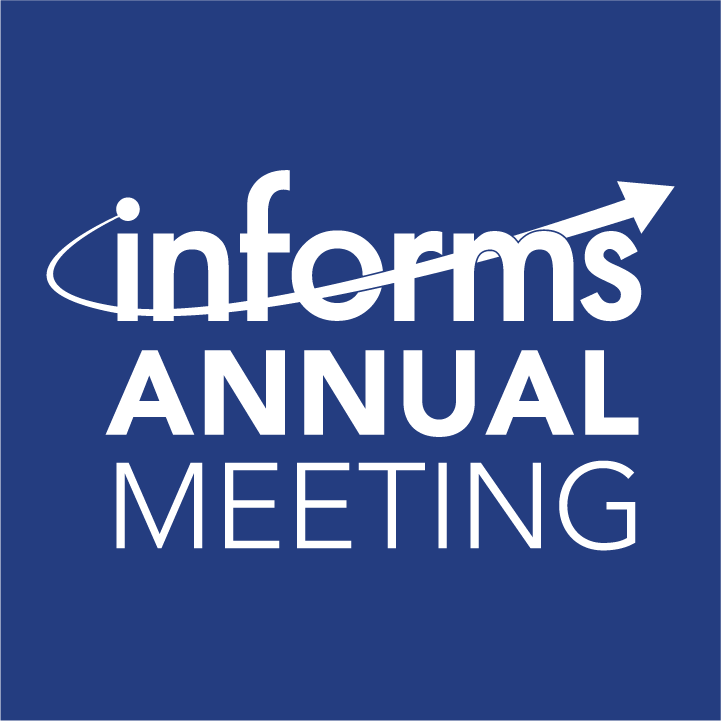Join the conference exhibitors as they discuss innovations and best practices in the field. Professional Development Units (PDUs) are available to those who attend these sessions. All attendees are welcome to join during the scheduled time.
Dates, Times, and Descriptions Below
Check back frequently, new tutorials will be added as they are scheduled.
Monday, October 21
Time: 8:00-8:35am
Location: SUMMIT-345

One Goal, Multiple Paths: Understanding Gurobi’s Python APIs for Efficient Model Construction
Presented by: Maliheh Aramon
Discover the versatility of Gurobi’s Python APIs in our workshop, “One Goal, Multiple Paths.” We’ll explore three key approaches to model building:
- Term-based modeling involves constructing models with individual variables and constraints for detailed control.
- Matrix-based expressions utilize linear algebra for efficient, large-scale model construction.
- Data-first methods leverage pandas DataFrames and Series, integrating seamlessly with data-centric workflows.
In this workshop, we will walk you through the principles, best practices, and practical examples for each method. By the end of the workshop, you will be equipped to choose and implement the most suitable approach for your optimization projects. Join us to master Gurobi’s powerful Python APIs and enhance your modeling skills.
Time: 8:40-9:15am
Location: SUMMIT-345

The what, why, and how of DecisionOps: It’s not just about what you run, but how you run it
Presented by: Carolyn Mooney
Optimization is founded upon the promise of efficiency and improving solutions. While it’s common to believe success starts and ends with an algorithm’s runtime, there are tremendous gains to be had beyond those bounds.
While continued optimization model and solver development is important, the next chapter of optimization will be defined by how teams deploy, test, and operate these solutions. Whether you implement a trustworthy sedan or F1 racer of optimization tech, there are key (and often overlooked) efficiencies to be realized in how teams test, tune, troubleshoot, and operate their solutions.
Operations research and decision science teams balance the demands of budgets, headcount, revenue, timelines and success metrics, building and improving DecisionOps practices will save time, money, and headache in pursuit of optimization efficiency. This session will explore how through real-world applications and storytelling.
Time: 10:45–11:20am
Location: SUMMIT-345

Hexaly, a New Kind of Global Optimization Solver
Presented by: Fred Gardi
Hexaly is a new kind of global optimization solver. Its modeling interface is nonlinear and set-oriented. It also supports user-coded functions, thus enabling black-box optimization and, more particularly, simulation optimization. In a sense, Hexaly APIs unify modeling concepts from mixed-linear programming, nonlinear programming, and constraint programming. Under the hood, Hexaly combines various exact and heuristic optimization methods: spatial branch-and-bound, simplex methods, interior-point methods, augmented Lagrangian methods, automatic Dantzig-Wolfe reformulation, column and row generation, propagation methods, local search, direct search, population-based methods, and surrogate modeling techniques for black-box optimization.
Regarding performance benchmarks, Hexaly distinguishes itself against the leading solvers in the market, like Gurobi, IBM Cplex, and Google OR Tools, by delivering fast and scalable solutions to problems in the space of Supply Chain and Workforce Management like Routing, Scheduling, Packing, Clustering, Matching, Assignment, and Location problems. For example, on notoriously hard problems like the Pickup and Delivery Problem with Time Windows or Flexible Job Shop Scheduling with Setup Times, Hexaly delivers solutions with a gap to the best solutions known in the literature smaller than 1% in a few minutes of running times on a basic computer.
In addition to the Optimizer, we provide an innovative development platform called Hexaly Studio to model and solve rich Vehicle Routing and Job Shop Scheduling problems in a no-code fashion. The user can define its problem and data, run the Optimizer, visualize the solutions and key metrics through dashboards, and deploy the resulting app in the cloud – without coding. This web-based platform is particularly interesting for educational purposes; it is free for faculty and students.
Time: 11:25am–12noon
Location: SUMMIT-345
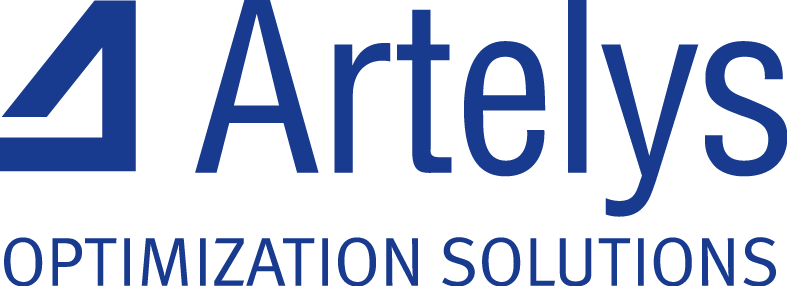
Model and Solve Nonlinear Optimization Problems with Artelys Knitro
Presented by: Richard Waltz
The challenges faced by operational research (OR) practitioners, whether in operational scenarios or during techno-economic analyses, are typically intricate and inherently nonlinear. A skilled modeler’s task is to simplify this complexity and identify the core issue whose resolution untangles the rest.
A common strategy is to linearize the problem to leverage the wealth of theoretical and practical tools provided by linear programming, such as duality, sensitivity analysis, and efficient algorithms. While this approach can be effective, one can often obtain significantly better solutions by directly solving a nonlinear model that more closely resembles the actual problem.
Artelys Knitro is the leading solver focused on large-scale, nonlinear (potentially non-convex), optimization problems. Knitro offers both interior-point and active-set algorithms for continuous models, as well as tools for handling problems with integer variables and other discrete structures. This tutorial will introduce the key features of Knitro, and demonstrate how to use Knitro to model and solve optimization problems in various environments.
This tutorial will showcase several instances of nonlinear problems, typically addressed through linear relaxation, yet warranting a direct approach. It will delve into the methodologies and tools employed to tackle these challenges. This tutorial aims at an audience familiar with the basics of mathematical optimization, focusing on practical examples.
Time: 12:45-1:20pm
Location: SUMMIT-345

Optimization pipeline design: from data curation to algebraic modeling with GAMSPy
Presented by: Adam Christensen and Atharv Bhosekar
Algebraic modeling languages (AMLs) have been a cornerstone in the fields of optimization and economics. These tools are popular because they are able to effortlessly link the worlds of algebra and computer science — that is, the syntax of the AML closely approximates that of handwritten algebra but its execution is automated and scalable. AMLs, by design, are not general purpose programming languages; as a result, it can be difficult to gather, clean and prepare data for a modeling environment. Recent years have seen sophisticated data science tools enter the mainstream. Languages such as Python and R can leverage Numpy/Pandas and Shiny/Tidyverse/Dplyr to efficiently work with large data in deployable environments. Modern infrastructure tools such as Docker and Kubernetes make it possible to isolate workflows and scale compute resources via cloud platforms. All of these compute resources mean that data assets are arriving at optimization model instances from an ever-diversifying number of start points. In this workshop, we present a Python package called GAMSPy that leverages modern data science tools with the flexible nature of Python to construct a powerful Python-AML. This presentation will cover a number of real-world inspired examples that illustrate how to bring data into an environment and effectively clean it for use in an optimization model.
Time: 1:25–2pm
Location: SUMMIT-345
Quantum Optimization: Applying Quantum Computing to Business Optimization Challenges
Presented by: Murray Thom
A recent Hyperion Research survey reveals that businesses expect up to 20x return on investment from quantum optimization investments, and over 21% plan production-level use of quantum computing over the next 12-18 months–a 50% increase over the past two years.
Attend this session to learn about quantum optimization, and how these new resources are being used for challenging combinatorial optimization problems such as:
• Optimized workforce scheduling for improved employee experience
• Enhanced production scheduling to improve customer satisfaction
• More efficient and more sustainable logistics routing.
Time: 2:15-2:50pm
Location: SUMMIT-345
Techno-economic Analysis with MATLAB: Microgrid Planning for Green Hydrogen Production
Presented by: Chris Lee
Techno-economic analysis of microgrids is essential for assessing the financial viability and technical feasibility of integrating renewable energy sources. This analysis enables cost-effective strategies and technological innovations to enhance energy resilience, reduce carbon footprints, and accelerate the transition to sustainable energy.
In this session, we will present a live demonstration of how to develop a techno-economic analysis framework using optimization tools in MATLAB. We will cover the following:
- Modeling using the problem-based optimization workflow
- Solving using the linear programming solver
- Performing sensitivity and statistical analysis
As a case study, we will focus on planning a microgrid for green hydrogen production. We will explore how to determine the optimal power and energy ratings within a microgrid system incorporating renewable energy and energy storage. The goal is to power an electrolyzer to produce green hydrogen at the lowest cost and highest return on investment over a 20-year period.
Time: 2:55-3:30pm
Location: SUMMIT-345
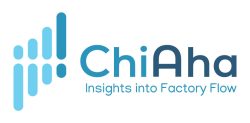
Introducing ChiAha – the Smart Manufacturing Digital Twin Toolkit
Presented by: Andrew Siprelle
ChiAha can predict production line performance and OEE within 1% accuracy. High-fidelity modeling constructs with statistically modeled data-driven behavior. Provide answers to many of the questions related to the design, operation and improvement of lines for optimum OEE.
Time: 4:00-4:35pm
Location: SUMMIT-345
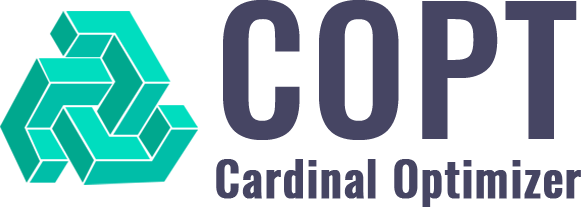
Unlocking Optimization Potential with COPT
Presented by: Tiancheng Zhang
Join us for an insightful session on Cardinal Optimizer (COPT), where you’ll discover its advanced and newly released capabilities for modeling and solving complex optimization problems. This presentation will introduce the current state of COPT and highlight new features, including a modeling interface for conic problems, support for the exponential cone, and first-order methods on GPU. Initial results on solving large-scale LPs on GPU show exciting possibilities to tackle previously unsolvable problems.
As the R&D team continues to achieve technical breakthroughs, our operations and support team are dedicated in engaging and enriching the COPT user community. With its user-friendly interfaces and comprehensive support, COPT has been seamlessly integrated into various packages and software for both research projects and industrial applications.
Time: 4:40-5:15pm
Location: SUMMIT-345

Littlefield 2.0: A New Version of the Online Game for Operations Management Courses
Presented by: Samuel Wood
Tuesday, October 22
Time: 8-8:35am
Location: Summit-345

How Virtual Work-integrated Learning can Help Educators Overcome Today’s Instructional Challenges
Presented by: Scott Carr
A Stukent Simternship is a career-relevant, work-integrated learning experience that helps students connect classroom concepts to real-world tasks. In a Simternship, students become marketing managers, PR officers, entrepreneurs, SEO specialists, accountants, and more. They interact with simulated supervisors and coworkers, perform realistic tasks, and build confidence in the safety of a simulated environment.
Simternships allow students to apply new knowledge to professional problems. This level of immersion helps students encode the information they are learning in class, which allows them to transfer new concepts to real-world scenarios. All Simternships feature auto-grading and LMS integration to take the hassle out of hands-on education.
Time: 8:40-9:15am
Location: SUMMIT-345

Practical Guidelines for Model Improvement and Reformulation
Presented by: Rodrigo Fuentes
In this showcase, we will share insights and lessons learned from helping Gurobi customers from a wide range of industries adjust their optimization models to improve solver performance and numerical behavior. We will look at the challenges that we see most often in LP, MIP and MINLP models, and discuss our approach and typical recommendations to help address them. We will also consider some well-known modeling “rules of thumb” and discuss how applicable they are in 2024.
Time: 10:45-11:20am
Location: SUMMIT-345
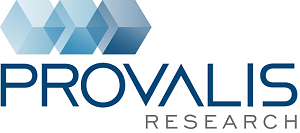
Topic Modeling or Taxonomy Building: Benefits, Drawbacks, and Implementation Strategies
Presented by: Normand Peladeau
Topic modeling is a “quick and dirty” heuristic method to inductively extract topics from large text collections. While it holds significant potential, the results can sometimes be suboptimal. This presentation will explore various strategies to enhance topic modeling outcomes, including alternative algorithms, the application of large language models (LLMs) and word embeddings, and automatic word sense disambiguation techniques. We will also identify limitations of topic modeling and how building text analytics taxonomies can serve as a more precise alternative for measurement, capturing low-signal events, and hypothesis testing. Although developing such taxonomies is time-consuming, we will demonstrate, using WordStat text analytics software, how various techniques and strategies can yield more accurate results more efficiently and how these two approaches can complement each other.
Time: 11:25am-12noon
Location: SUMMIT-345

Python and AMPL: Build Optimization Applications Quickly with amplpy, Pandas, Streamlit – and AI
Presented by: Filipe Brandão & Bob Fourer
Python and its vast ecosystem are great for data pre-processing, solution analysis, and visualization, but Python’s design as a general-purpose programming language makes it less than ideal for expressing typical complex optimization problems. AMPL is a declarative language that is designed for describing problems and that integrates naturally with Python.
In this presentation, we’ll survey a range of contexts where AMPL and Python work together to make optimization software simpler to use, faster to run, and easier to integrate with enterprise systems:
- Installing AMPL and solvers as Python packages anywhere
- Importing and exporting data efficiently from/to Python data structures, including Pandas and Polars dataframes
- Modeling and solving in Jupyter notebooks on Google Colab
- Deploying to the cloud quickly and easily with Pandas, Streamlit, and amplpy
You’ll also see how generative AI technology is enabling a rapid development process for both AMPL and Python, reducing the time and effort to produce working applications that are ready for end-users.
Time: 12:45-1:20pm
Location: SUMMIT-345

From Data to Decisions with the help of Gen AI and great optimization technology
Presented by: Dinakar Gade
You have a team with a great analytics background. They have created advanced analytical tools using Python, R, or your current optimization solver. They managed to derive insights from your data and figured out what the best path forward is. But the tools remain cumbersome to use and are not accessible by business domain experts and business users. It is time to put these critical analytical insights into the hands of the business – with the help LLMs and great optimization technology.
In this tutorial, you’ll learn how FICO’s Xpress Optimization capabilities make it possible to embed your analytic and optimization models within business user-friendly applications. See how to supercharge your models with simulation, fast and robust optimization, reporting, what-if analysis, and agile extensibility for your ever-changing business. We will demonstrate how LLMs can help developing models and configure the solution as well as efficiently guide the business user.
Time: 1:25-2pm
Location: SUMMIT-345

Data-Driven Supply Chain Optimization: Demand Forecasting and Deep Reinforcement Learning
Presented by: Sohrab Andaz
Inventory control is a complex real-world problem that involves handling challenges like seasonal demand, time-varying costs, complex inventory arrival dynamics, and various real-world constraints. In modern supply chain management, effective inventory control requires more than traditional optimization methods. Over the past few years, the Amazon SCOT Demand Forecasting and RL groups have pioneered deep learning models that distill Amazon-scale data into deployable time-series forecasting models and control policies designed to handle these complexities.
In this talk, we will explore both approaches, demonstrating:
- How deep learning techniques naturally handle supply chain forecasting challenges, including seasonality, cold starts, diverse product categories, and forecast volatility.
- How deep reinforcement learning can move inventory control beyond the predict-then-optimize framework, allowing practitioners to directly optimize business objectives using historical data.
This talk will also draw on real-world deployment experiences of both deep learning and deep RL policies
Time: 2:15-2:50pm
Location: SUMMIT-345

Using AI in CoCalc to Improve your Collaborative Workflow
Presented by: Blaec Bejarano
Explore how CoCalc can enhance your collaborative projects at the INFORMS 2024 Annual Meeting. Join us to see how AI-driven features within CoCalc can streamline tasks, improve data analysis, and facilitate teamwork for computational scientists. This session offers practical insights and strategies you can immediately apply to make your collaborative efforts more effective. Don’t miss this opportunity to see how CoCalc can help you reduce friction between different workflows within your organization.
The content presented is most relevant to Professional (Mid-Career); Executive (Senior Level); and Associate (Early Career).
Time: 2:55-3:30pm
Location: SUMMIT-345

Constraints and Coordination for Deep Reinforcement Learning Agents
Presented by: Carson Eisenach
We explore new techniques for constrained reinforcement learning (RL) in the real-world, specifically as applied to inventory management. The classic approach is to use model predictive control to enforce constraint adherence. With Deep RL policies, this becomes complicated as they consume high-dimensional features to make decisions, and accurately forward simulating this joint distribution is extremely challenging, if not impossible. This session provides an overview of a new approach — “Neural Coordinator” — which directly forecasts dual costs under which a policy will adhere to the desired constraints. We will demonstrate its effectiveness in the inventory control setting and cover how to back-test policies in the presence of constraints.
Time: 4-4:35pm
Location: SUMMIT-345

Building Classification Prediction Models for Image Recognition using Torch Deep Learning
Presented by: Kevin Potcner
Images are rich with information. Contained in the thousands of pixels within an image are patterns in shapes, colors, and textures. These features often correspond to attributes that classify images into belonging to a particular category. Advancements in deep neural network modeling have been made providing analysts with a mechanism train models on a set of images and then apply that model to new images to predict the categories those new images belong to.
In this presentation, a statistical scientist from JMP software will demonstrate a new add-in tool -Torch Deep Learning- in JMP to model and classify images.
Time: 4:40-5:15pm
Location: SUMMIT-345
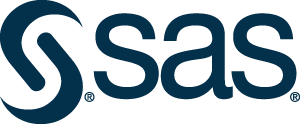
Building and Solving Optimization Models with SAS
Presented by: Rob Pratt
SAS offers extensive analytic capabilities, including machine learning, deep learning, natural language processing, statistical analysis, optimization, and simulation. SAS analytic functionality is also available through the open, cloud-enabled design of SAS® Viya®. You can program in SAS or in other languages – Python, Lua, Java, and R. SAS Analytics is also equipped with AI-enabled automations and modern low-code or no-code user interfaces that democratize data science usage in your organization and offer unparalleled speed to value.
OPTMODEL from SAS provides a powerful and intuitive algebraic optimization modeling language and unified support for building and solving LP, MILP, QP, conic, NLP, constraint programming, network-oriented, and black-box models. This showcase will include an overview of the optimization capabilities and demonstrate recently added features.
